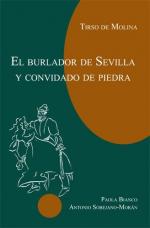|
This section contains 7,973 words (approx. 27 pages at 300 words per page) |

|
SOURCE: “Religious Melancholy (Tirso),” in Melancholy and the Secular Mind in Spanish Golden Age Literature, University of Missouri Press, 1990, pp. 37-63.
In the following excerpt, Soufas concentrates on de Molina's El condenado por desconfiado and its character Paulo who, in Soufas' essay, clearly defines the seventeenth-century understanding of religious melancholy.
In truth it was melancholy that the devil breathed into Adam at the time of his fall: melancholy which robs a man of his ardour and faith.
St. Hildegard of Bingen
The epigraph above calls attention to the importance of melancholy in the religious and the moral teachings against sin. St. Hildegard of Bingen concentrates on the origin of melancholy, which she describes as simultaneous with the commission of Original Sin. In her account, the twelfth-century saint focuses on the moment when Adam ate the forbidden apple and the melancholy humor in his blood curdled, “as when a...
|
This section contains 7,973 words (approx. 27 pages at 300 words per page) |

|


